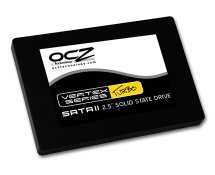For many people who use a computer, knowing where to store growing amounts of data can become tricky.
You start off with one disk, run out of space, buy a bigger one etc. And if you have a camcorder you’ll be generating gigabytes of data for every Mini DV tape you record. Also, you may have a digital video recorder attached to your TV and wish to permanently keep some of the programmes/films you’ve recorded. Now you’re talking hundreds of gigabytes, if not terabytes of storage that are required to handle all this data.
And then there’s the problem of backups… oh boy, this will be a fun project 🙂
Continue reading “A Home Fileserver using ZFS”
 After you’ve bought your
After you’ve bought your 

 Until today I had never encountered even one read, write or checksum error on my ZFS NAS. Today I saw one checksum error coming from the mirrored SSD root boot pool which I have just installed.
Until today I had never encountered even one read, write or checksum error on my ZFS NAS. Today I saw one checksum error coming from the mirrored SSD root boot pool which I have just installed.